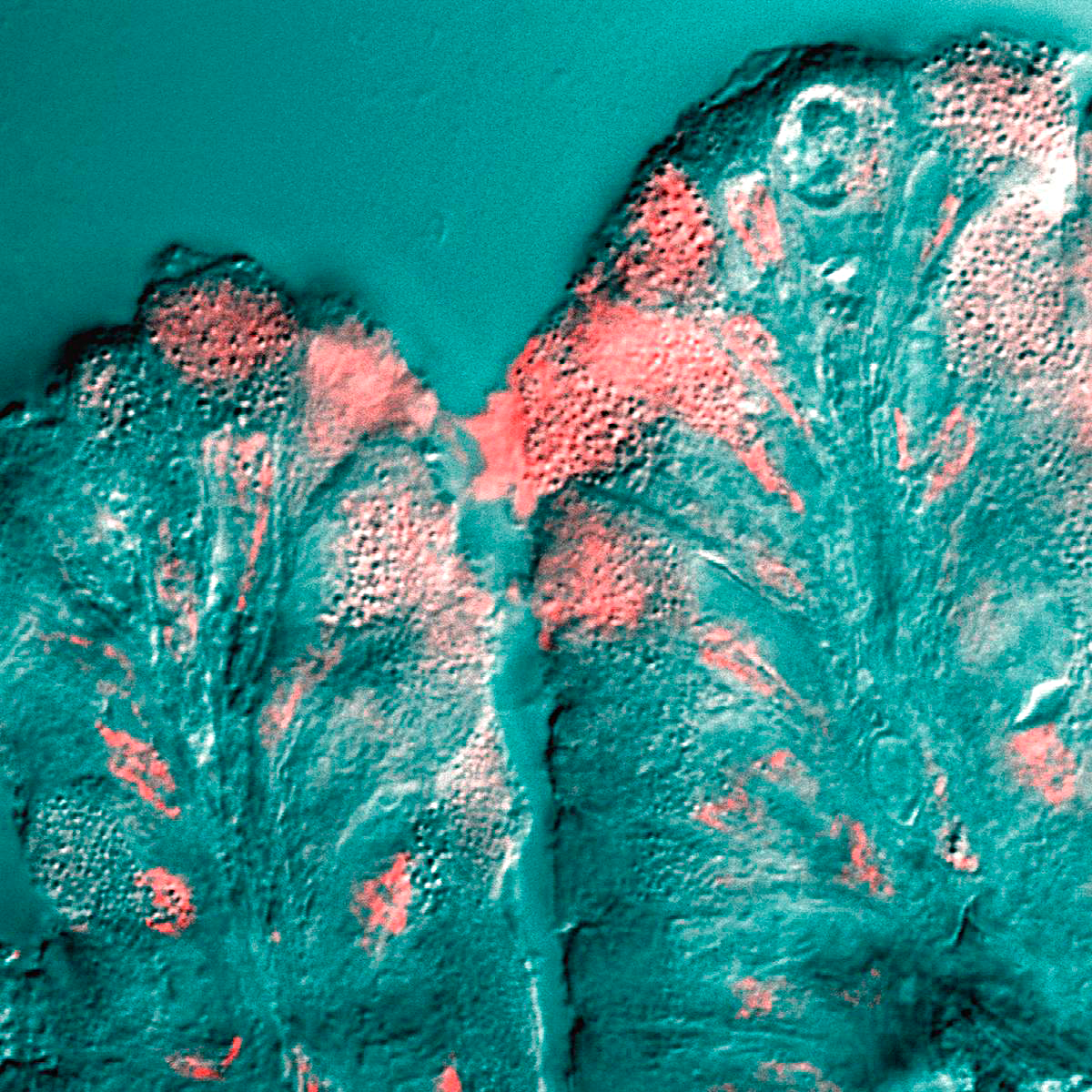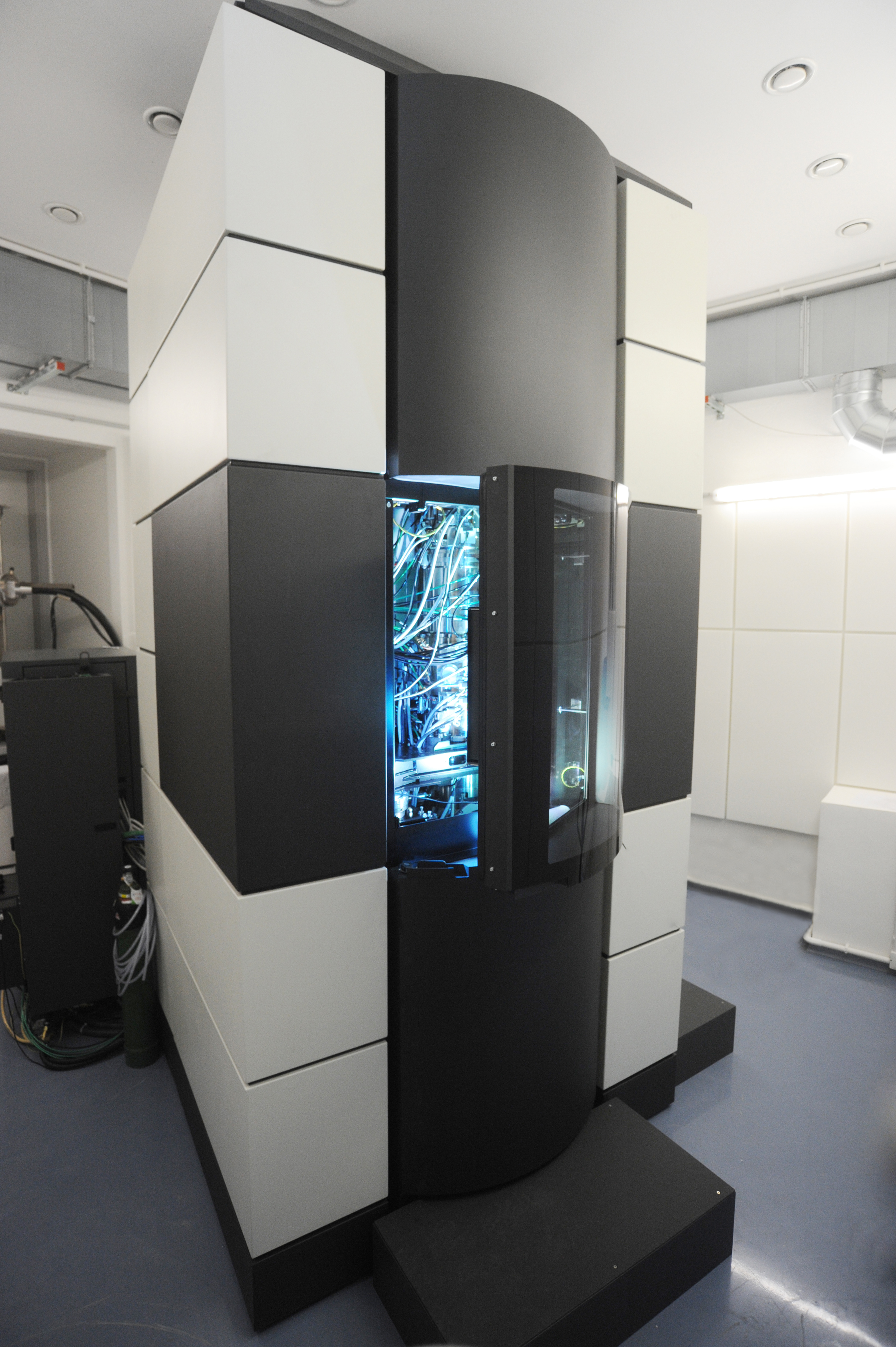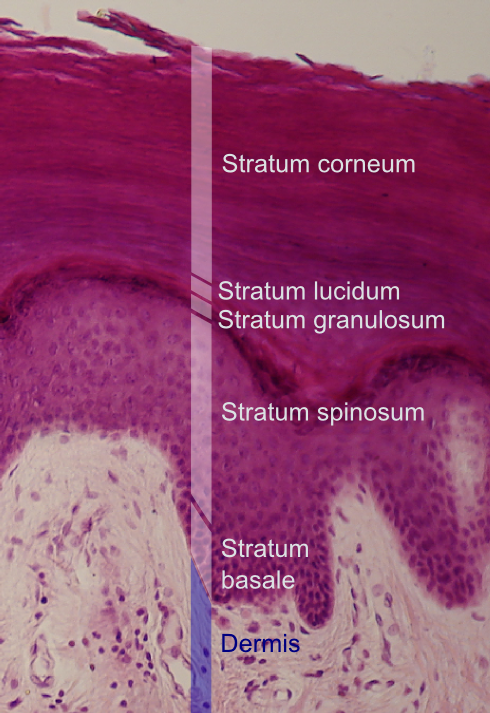|
Olfactory Mucosa
The olfactory mucosa is the Neuroepithelial cell, neuroepithelial mucosa lining the roof and upper parts of the Nasal septum, septum and lateral wall of the nasal cavity which contains Bipolar neuron, bipolar neurons of the primary receptor neurons of the Olfactory pathways, olfactory pathway, as well as supporting cells. The neurons' Dendrite, dendrites project towards the nasal cavity while their axons ascend through the cribriform plate as the Olfactory nerve, olfactory nerves. The part of the nasal cavity that is lined with olfactory mucosa is known as the olfactory region (''pars olfactoria tunicae mucosae nasi''), while the rest of the nasal cavity that is lined by ordinary respiratory mucosa is known as the respiratory region. Structure Olfactory mucosa lines about 5cm2 of the posterosuperior parts of the lateral nasal wall. Parts of the nasal cavity lined by olfactory mucosa include: parts of the roof of the nasal cavity, the superior nasal concha and some upper parts ... [...More Info...] [...Related Items...] OR: [Wikipedia] [Google] [Baidu] |
Olfactory System
The olfactory system, is the sensory nervous system, sensory system used for the sense of smell (olfaction). Olfaction is one of the special senses directly associated with specific organs. Most mammals and reptiles have a main olfactory system and an accessory olfactory system. The main olfactory system detects airborne substances, while the accessory system senses fluid-phase stimuli. The senses of smell and taste (gustatory system) are often referred to together as the chemosensory system, because they both give the brain information about the chemical composition of objects through a process called transduction (physiology), transduction. Structure Peripheral The peripheral olfactory system consists mainly of the nostrils, ethmoid bone, nasal cavity, and the olfactory epithelium (layers of thin tissue covered in mucus that line the nasal cavity). The primary components of the layers of epithelial tissue are the mucous membranes, olfactory glands, olfactory receptor neurons ... [...More Info...] [...Related Items...] OR: [Wikipedia] [Google] [Baidu] |
Bowman's Glands
Olfactory glands, also known as Bowman's glands, are a type of nasal gland situated in the part of the olfactory mucosa beneath the olfactory epithelium, that is the lamina propria, a connective tissue also containing fibroblasts, blood vessels and bundles of fine axons from the olfactory neurons. An olfactory gland consists of an acinus in the lamina propria and a secretory duct going out through the olfactory epithelium. Electron microscopy studies show that olfactory glands contain cells with large secretory vesicles. Olfactory glands secrete the gel-forming mucin protein MUC5B. They might secrete proteins such as lactoferrin, lysozyme, amylase and IgA, similarly to serous glands. The exact composition of the secretions from olfactory glands is unclear, but there is evidence that they produce odorant-binding protein. Function The olfactory glands are tubuloalveolar glands surrounded by olfactory receptors Olfactory receptors (ORs), also known as odorant receptors, a ... [...More Info...] [...Related Items...] OR: [Wikipedia] [Google] [Baidu] |
Adult Stem Cell
Adult stem cells are undifferentiated cells, found throughout the body after development, that multiply by cell division to replenish dying cells and regenerate damaged tissues. Also known as somatic stem cells (from Greek σωματικóς, meaning ''of the body''), they can be found in juvenile, adult animals, and humans, unlike embryonic stem cells. Scientific interest in adult stem cells is centered around two main characteristics. The first of which is their ability to divide or self-renew indefinitely, and the second their ability to generate all the cell types of the organ from which they originate, potentially regenerating the entire organ from a few cells. Unlike embryonic stem cells, the use of human adult stem cells in research and therapy is not considered to be controversial, as they are derived from adult tissue samples rather than human embryos designated for scientific research. The main functions of adult stem cells are to replace cells that are at risk ... [...More Info...] [...Related Items...] OR: [Wikipedia] [Google] [Baidu] |
Odor
An odor (American English) or odour ( Commonwealth English; see spelling differences) is a smell or a scent caused by one or more volatilized chemical compounds generally found in low concentrations that humans and many animals can perceive via their olfactory system. While ''smell'' can refer to pleasant and unpleasant odors, the terms ''scent'', ''aroma'', and ''fragrance'' are usually reserved for pleasant-smelling odors and are frequently used in the food and cosmetic industry to describe floral scents or to refer to perfumes. Odor physiology Sense of smell The perception of odors, or sense of smell, is mediated by the olfactory nerve. The olfactory receptor (OR) cells are neurons present in the olfactory epithelium, which is a small patch of tissue at the back of the nasal cavity. There are millions of olfactory receptor neurons that act as sensory signaling cells. Each neuron has cilia in direct contact with the air. Odorous molecules bind to receptor pro ... [...More Info...] [...Related Items...] OR: [Wikipedia] [Google] [Baidu] |
Mucus
Mucus (, ) is a slippery aqueous secretion produced by, and covering, mucous membranes. It is typically produced from cells found in mucous glands, although it may also originate from mixed glands, which contain both Serous fluid, serous and mucous cells. It is a viscous colloid containing inorganic ions, inorganic salts, antimicrobial enzymes (such as lysozymes), Antibody, immunoglobulins (especially Immunoglobulin A, IgA), and glycoproteins such as lactoferrin and mucins, which are produced by goblet cells in the mucous membranes and submucosal glands. Mucus covers the Epithelium, epithelial cells that interact with outside environment, serves to protect the linings of the respiratory system, respiratory, Digestion#Digestive system, digestive, and Genitourinary system, urogenital systems, and structures in the Visual system, visual and auditory systems from pathogenic Fungus, fungi, bacteria and viruses. Most of the mucus in the body is produced in the gastrointestinal tract. ... [...More Info...] [...Related Items...] OR: [Wikipedia] [Google] [Baidu] |
Odorant Binding Protein
Odorant-binding proteins (OBPs) are small (10 to 30 kDa) soluble proteins secreted by auxiliary cells surrounding olfactory receptor neurons, including the nasal mucus of many vertebrate species and in the sensillar lymph of chemosensory sensilla of insects. OBPs are characterized by a specific protein domain that comprises six α-helices joined by three disulfide bonds. Although the function of the OBPs as a whole is not well established, it is believed that they act as odorant transporters, delivering the odorant molecules to olfactory receptors in the cell membrane of sensory neurons. The olfactory receptors of terrestrial animals exist in an aqueous environment, yet detect odorants that are primarily hydrophobic. The aqueous solubility of hydrophobic odorants is greatly enhanced via odorant-binding proteins, which exist in the extracellular fluid surrounding the odorant receptors. This family is composed of pheromone binding proteins (PBP), which are male-specific and assoc ... [...More Info...] [...Related Items...] OR: [Wikipedia] [Google] [Baidu] |
Electron Microscopy
An electron microscope is a microscope that uses a beam of electrons as a source of illumination. It uses electron optics that are analogous to the glass lenses of an optical light microscope to control the electron beam, for instance focusing it to produce magnified images or electron diffraction patterns. As the wavelength of an electron can be up to 100,000 times smaller than that of visible light, electron microscopes have a much higher resolution of about 0.1 nm, which compares to about 200 nm for light microscopes. ''Electron microscope'' may refer to: * Transmission electron microscope (TEM) where swift electrons go through a thin sample * Scanning transmission electron microscope (STEM) which is similar to TEM with a scanned electron probe * Scanning electron microscope (SEM) which is similar to STEM, but with thick samples * Electron microprobe similar to a SEM, but more for chemical analysis * Low-energy electron microscope (LEEM), used to image surfaces * ... [...More Info...] [...Related Items...] OR: [Wikipedia] [Google] [Baidu] |
Stem Cell
In multicellular organisms, stem cells are undifferentiated or partially differentiated cells that can change into various types of cells and proliferate indefinitely to produce more of the same stem cell. They are the earliest type of cell in a cell lineage. They are found in both embryonic and adult organisms, but they have slightly different properties in each. They are usually distinguished from progenitor cells, which cannot divide indefinitely, and precursor or blast cells, which are usually committed to differentiating into one cell type. In mammals, roughly 50 to 150 cells make up the inner cell mass during the blastocyst stage of embryonic development, around days 5–14. These have stem-cell capability. '' In vivo'', they eventually differentiate into all of the body's cell types (making them pluripotent). This process starts with the differentiation into the three germ layers – the ectoderm, mesoderm and endoderm – at the gastrulation stage. However, whe ... [...More Info...] [...Related Items...] OR: [Wikipedia] [Google] [Baidu] |
Basal Cells
The stratum basale (basal layer, sometimes referred to as ''stratum germinativum'') is the deepest layer of the five layers of the epidermis, the external covering of skin in mammals. The stratum basale is a single layer of columnar or cuboidal basal cells. The cells are attached to each other and to the overlying stratum spinosum cells by desmosomes and hemidesmosomes. The nucleus is large, ovoid and occupies most of the cell. Some basal cells can act like stem cells with the ability to divide and produce new cells, and these are sometimes called basal keratinocyte stem cells. Others serve to anchor the epidermis glabrous skin (hairless), and hyper-proliferative epidermis (from a skin disease).McGrath, J.A.; Eady, R.A.; Pope, F.M. (2004). ''Rook's Textbook of Dermatology'' (Seventh Edition). Blackwell Publishing. Pages 3.7. . They divide to form the keratinocytes of the stratum spinosum, which migrate superficially. Other types of cells found within the stratum basale are m ... [...More Info...] [...Related Items...] OR: [Wikipedia] [Google] [Baidu] |
Sustentacular Cell
A sustentacular cell is a type of cell primarily associated with structural support, they can be found in various tissues. * Sustentacular cells of the olfactory epithelium (also called supporting cells or Sertoli cells) have been shown to be involved in the phagocytosis of dead neurons, odorant transformation and xenobiotic metabolism. * One type of sustentacular cell is the Sertoli cell, in the testicle. It is located in the walls of the seminiferous tubules and supplies nutrients to sperm. They are responsible for the differentiation of spermatids, the maintenance of the blood-testis barrier, and the secretion of inhibin, androgen-binding protein and Müllerian-inhibiting factor. * The organ of Corti in the inner ear and taste bud Taste buds are clusters of taste receptor cells, which are also known as gustatory cells. The taste receptors are located around the small structures known as papillae found on the upper surface of the tongue, soft palate, upper esopha ... [...More Info...] [...Related Items...] OR: [Wikipedia] [Google] [Baidu] |
Olfactory Receptor Neuron
An olfactory receptor neuron (ORN), also called an olfactory sensory neuron (OSN), is a sensory neuron within the olfactory system. Structure Humans have between 10 and 20 million olfactory receptor neurons (ORNs). In vertebrates, ORNs are Bipolar neuron, bipolar neurons with dendrites facing the external surface of the cribriform plate with axons that pass through the cribriform foramina with terminal end at olfactory bulbs. The ORNs are located in the olfactory epithelium in the nasal cavity. The cell bodies of the ORNs are distributed among the wikt:stratified, stratified layers of the olfactory epithelium. Many tiny hair-like non-motile cilia protrude from the olfactory receptor cell's dendrites. The dendrites extend to the olfactory epithelial surface and each ends in a dendritic knob from which around 20 to 35 cilia protrude. The cilia have a length of up to 100 micrometres and with the cilia from other dendrites form a meshwork in the olfactory mucus. The surface of ... [...More Info...] [...Related Items...] OR: [Wikipedia] [Google] [Baidu] |
Bipolar Neuron
A bipolar neuron, or bipolar cell, is a type of neuron characterized by having both an axon and a dendrite extending from the soma (cell body) in opposite directions. These neurons are predominantly found in the retina and olfactory system. The embryological period encompassing weeks seven through eight marks the commencement of bipolar neuron development. Many bipolar cells are specialized sensory neurons (afferent neurons) for the transmission of sense. As such, they are part of the sensory pathways for smell, sight, taste, hearing, touch, balance and proprioception. The other shape classifications of neurons include unipolar, pseudounipolar and multipolar. During embryonic development, pseudounipolar neurons begin as bipolar in shape but become pseudounipolar as they mature. Common examples are the retina bipolar cell, the spiral ganglion and vestibular ganglion of the vestibulocochlear nerve (cranial nerve VIII), the extensive use of bipolar cells to transmit efferent ... [...More Info...] [...Related Items...] OR: [Wikipedia] [Google] [Baidu] |







